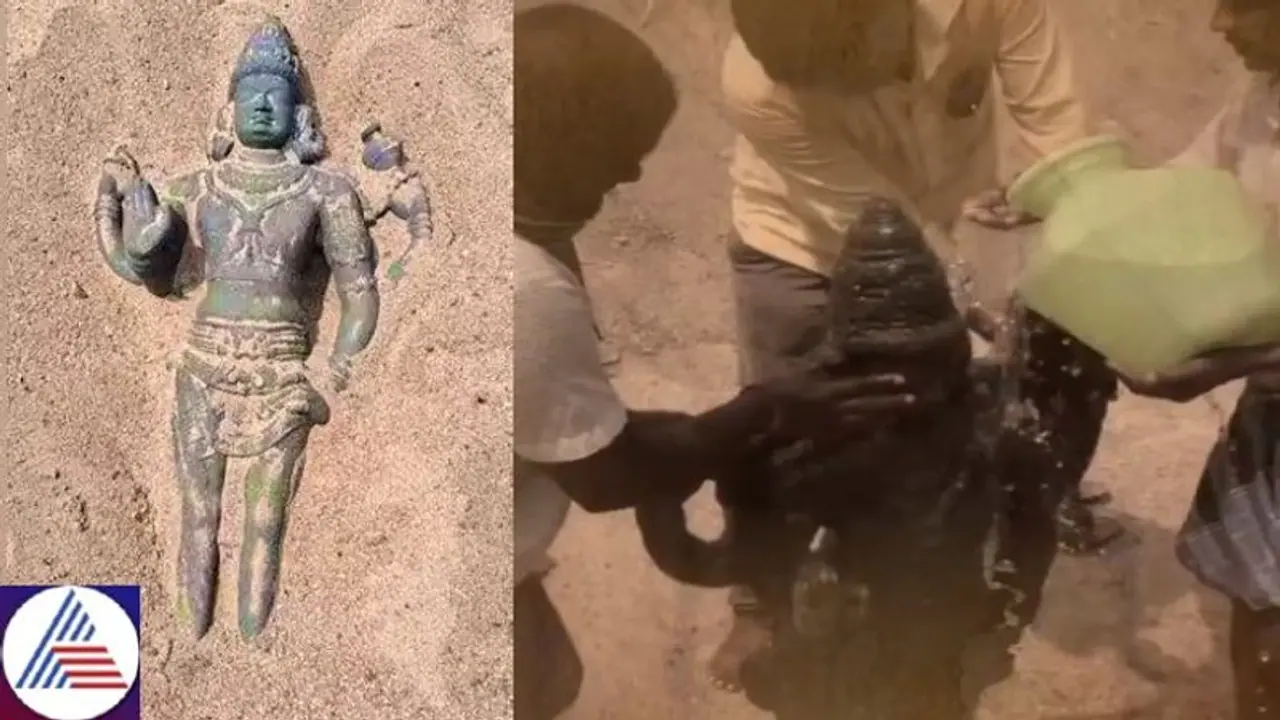In Tamil Nadu near Thiruvalangadu, boys discovered a rare 12th-century Murugan statue along the Kosasthalaiyar river. Weighing 150kg and standing 3.5 feet tall, it depicts Murugan as Brahmasastha, with typical features and accompanying artefacts nearby. The Department of Archaeology will conserve and display the idol for public viewing.
In Tamil Nadu, a captivating turn of events took place along the Kosasthalaiyar river near Thiruvalangadu, where a group of young boys stumbled upon an extraordinary Murugan idol. This discovery has set both locals and historians with excitement.

A pristine three-and-a-half-foot idol of Murugan was found, adorned with a Japamala (prayer beads) and Kamandala (water pot), portraying a seldom-seen manifestation of the deity known as Brahmasastha. Believed to hail from the later Chola era, this depiction of Murugan symbolizes his role in assuming the creation duties of Brahma.
Ancient Lord Vishnu idol, Shiva Linga discovered in Raichur; possibly from Kalyani Chalukya dynasty (WATCH)
Weighing approximately 150 kilograms and standing tall at 3.5 feet, the stone statue of Murugan was discovered nestled within the river's rocky terrain. The boys stumbled upon the ancient relic by chance while engrossed in their playful escapades along the riverbanks.
Another Gyanvapi case? Signs of Hindu temple found in Mangaluru mosque, sparks fresh row
Upon closer examination, it became evident that the idol possessed the characteristic features of Murugan, boasting four arms and two legs, thus affirming its identity. Furthermore, scattered amongst the riverbed were additional Murugan artefacts, hinting at the possibility of an archaeological site waiting to be explored.
After thorough scrutiny, experts tentatively traced the statue's origins back to the 12th century AD, shedding invaluable light on its historical significance. The discovery has piqued the curiosity of local villagers, who recognize the cultural importance embedded within such findings. Tahsildar Mathiazhagan, overseeing the proceedings, has assured the community that the Department of Archaeology will take charge of the statue for further examination and conservation efforts. Plans are underway to transfer the idol to the secure confines of the Revenue Gallery, ensuring its safeguarding and accessibility for public viewing.
